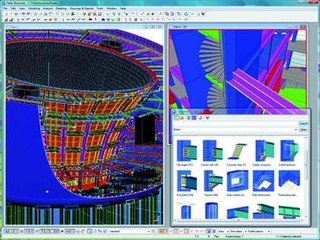
An emergency position-indicating radiobeacon (EPIRB) is a type of emergency locator beacon for commercial and recreational boats, a portable, battery-powered radio transmitter used in emergencies to locate boaters in distress and in need of immediate rescue. In the event of an emergency, such as a ship sinking or medical emergency onboard, the transmitter is activated and begins transmitting a continuous 406 MHz distress radio signal, which is used by search-and-rescue teams to quickly locate the emergency and render aid. The signal is detected by satellites operated by an international consortium of rescue services, COSPAS-SARSAT, which can detect emergency beacons anywhere on Earth transmitting on the distress frequency of 406 MHz. The satellites calculate the position or utilize the GPS coordinates of the beacon and quickly passes the information to the appropriate local first responder organization, which performs the search and rescue. As Search and Rescue approach the search areas, they use Direction Finding (DF) equipment to locate the beacon using the 121.5 MHz homing signal, or in newer EPIRBs, the AIS location signal. The basic purpose of this system is to help rescuers find survivors within the so-called "golden day" during which the majority of survivors can usually be saved. The feature distinguishing a modern EPIRB, often called GPIRB, from other types of emergency beacon is that it contains a GPS receiver and broadcasts its position, usually accurate within 100 m (330 ft), to facilitate location. Previous emergency beacons without a GPS can only be localized to within 2 km (1.2 mi) by the COSPAS satellites and relied heavily upon the 121.5 MHz homing signal to pin-point the beacons location as they arrived on scene.
SI is the International System of Units.
IA, Ia, or ia may refer to:
BI, Bi or bi may refer to:
Ni, NI or N-I may refer to:
Zayed International Airport, also known as Abu Dhabi International Airport, is the primary international airport serving Abu Dhabi, the capital of the United Arab Emirates (UAE). It is the second busiest airport in the UAE after Dubai International Airport, one of the busiest airports in the Middle East and is the hub for Etihad Airways as well as an operating base for Wizz Air Abu Dhabi and Air Arabia Abu Dhabi.

Etihad Airways is one of the two flag carriers of the United Arab Emirates, alongside Emirates. Its head office is in Khalifa City, Abu Dhabi, near Zayed International Airport. The airline commenced operations in November 2003, and is the second-largest airline in the UAE after Emirates.
ISS is an abbreviation for the International Space Station.
Isis most commonly refers to the Egyptian goddess Isis, or as an acronym for the Islamic State of Iraq and Syria (ISIS).

The automatic identification system (AIS) is an automatic tracking system that uses transceivers on ships and is used by vessel traffic services (VTS). When satellites are used to receive AIS signatures, the term Satellite-AIS (S-AIS) is used. AIS information supplements marine radar, which continues to be the primary method of collision avoidance for water transport. Although technically and operationally distinct, the ADS-B system is analogous to AIS and performs a similar function for aircraft.
American International School (AIS) may refer to:
Mubadala Investment Company PJSC, or simply Mubadala, is a state-owned global investment management holding company that acts as one of the sovereign wealth funds of the government of Abu Dhabi. The company was established in 2017 when then-named Mubadala Development Company and the International Petroleum Investment Company (IPIC) merged. Headquartered in Abu Dhabi, Mubadala also has offices in London, Rio de Janeiro, New York, San Francisco and Beijing.
Daniel L. Weinreb was an American computer scientist and programmer, with significant work in the environment of the programming language Lisp.

Tekla Structures is a building information modeling software able to model structures that incorporate different kinds of building materials, including steel, concrete, timber and glass. Tekla allows structural drafters and engineers to design a building structure and its components using 3D modeling, generate 2D drawings and access building information. Tekla Structures was formerly known as Xsteel.
The Application Interface Specification (AIS) is a collection of open specifications that define the application programming interfaces (APIs) for high-availability application computer software. It is developed and published by the Service Availability Forum and made freely available. Besides reducing the complexity of high-availability applications and shortening development time, the specifications intended to ease the portability of applications between different middleware implementations and to admit third party developers to a field that was highly proprietary in the past.
Information Systems International Conference is an AISINDO AIS Indonesia Chapter affiliated international conference administered by the Department of Information Systems, Institut Teknologi Sepuluh Nopember, Indonesia.
Sia is an Australian singer and songwriter.
This page is based on this
Wikipedia article Text is available under the
CC BY-SA 4.0 license; additional terms may apply.
Images, videos and audio are available under their respective licenses.



